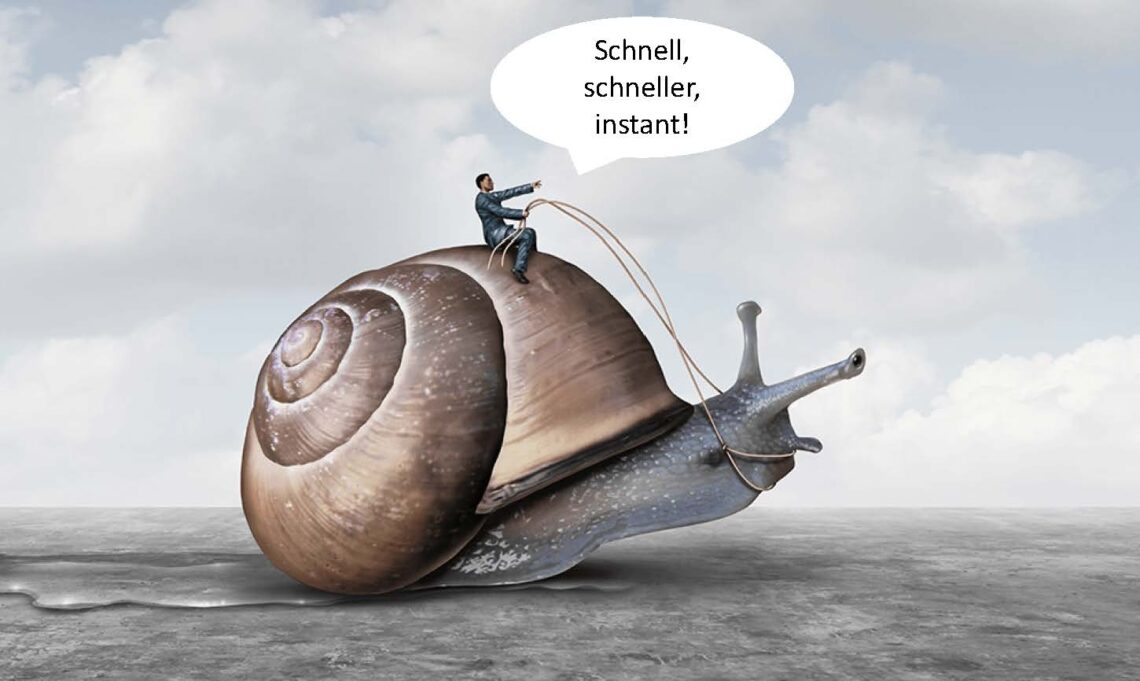Instant messages by Marcus W. Mosen: #9
When I hear the word „instant,“ I still spontaneously think of coffee, soup or cocoa first. After all, instant coffee was already around in 1881, invented by Alphonse Allais, who had been known as „Nescafé“ is industrially manufactured by Nestlé.

And since then, the 1999 EU directive has specified exactly which ingredients must be contained in order for a coffee to deserve the name „instant“.
Instant“ has also been a familiar word in the payment industry for quite some time – in fact, since 2014 The Euro Retail Payments Board (ERPB) suggested at the time that there should be at least one pan-European payment solution that must make funds available to a payee for use immediately – within 10 seconds – 24/7, and commissioned the European Payments Council (EPC) to develop such a payment system. The rulebook for „SCT Inst.“ was completed in November 2016 and became operational one year later. Currently, about 2000 banks in Europe are „Instant“-capable and offer this service to their customers on average at a price between 50 – 60 cents per transaction (sic!).
After the first „pirate copies“ of a revised „Retail Payment Strategy for the EU“ were circulating on Twitter, the darknet of the payment bubble, in recent weeks, we are now officially allowed to discuss the fireworks of the EU Commission’s strategies for the „New Normal“ in payment transactions and banking, such as
- the digital transformation of the financial sector in Europe to overcome the fragmentation of banking, or
- the legal framework for crypto assets, which is intended to shake up the Libra Association in the market, or
- the fight against cyber attacks, which are often ascribed to Putin & Friends as a new form of the Cold War, and
- – last but not least – about modern payment in the retail sector, which is likely to cause a furore behind closed doors at the German Retail Association (HDE).
One can get the impression that the EU is serious about building up its own competences in terms of digitisation and establishing European infrastructures in the financial services sector. On the other hand, the current framework conditions for implementing such ambitious strategies in real existing platforms and products in demand by the market are not the easiest. The question of whether the consumer really wants „just in time“ payment at the POS or in e-commerce is again almost irrelevant. But this is exactly where the stakes are high…

After all, it is not really clear whether consumers today feel a „deficit“ when they pay with their credit or debit card and thus „delayed“. Similarly, German e-commerce shoppers should continue to be happy if they are offered the option of paying for their purchases online one month later. Because until then he will have enough time to consider whether he really wants to keep the clothes. This is a phenomenon that is not known in France, by the way. There, all clothes that have been bought but not worn simply remain in the wardrobe. C’est ca!
But one passage in the Retail Payment Strategy made me sit up and take notice again: the EU wants to take its time to develop the label and matching logos for a pan-European payment solution – until the end of 2023.
And yet the solution would be so obvious here – only recently has suitable branding in Germany become available again for a direct payment solution! So why wander into the distant future….?
However, the EU „instant stakeholders“ still have to accept the question whether an actual „go to market“ – i.e. from strategy definition to market launch – may take more than 5 years. If this is the EU’s level of ambition for the much-vaunted European digitisation competence, then one should confidently put a few more shares of Amazon, Apple, Alphabet or soon Ant in one’s portfolio – this is already possible „instantly“ today.

However, the EU payment strategy’s requirement that instant payments gain the necessary acceptance in the market to set a new standard will not primarily depend on whether the market wants to be „innovative, efficient or competitive“. The global platforms and innovators from overseas are already taking care of these attributes used by the EU like a prayer wheel. Rather, the decisive question will be whether the stakeholders will develop an implementation mindset that is not based on national speed limits and egoisms. In other words: one must dare to do the virtually impossible – in other words, create something that will actually add value for retailers and consumers.
- instant messages #1 – 2020 – a key year for the European payment traffic?
- instant messages #2 – Socialist Phantasialand Berlin
- instant messages #3 – Dirty Money in times of Corona
- instant messages #4 – Corona Cash Killer?
- Instant messages #5 – Schumpeter’s legacy – COVID19 as creative destruction?
- instant messages #6 – Acts of strength in politics! Acts of strength in payment?
- instant messages #7 – Wirecard and the German payment world – a cauldron of colorful
- instant messages #8 – Summer slump in German payment traffic – yes where is it?




